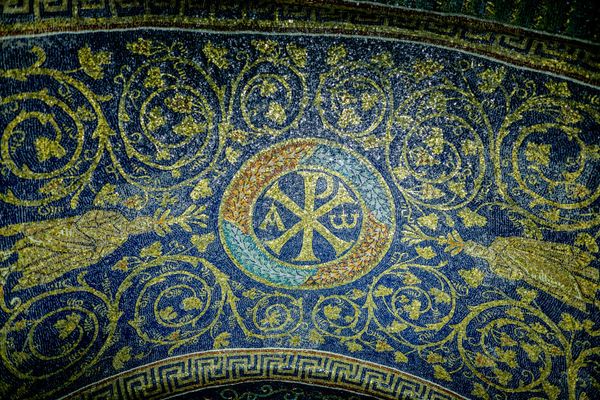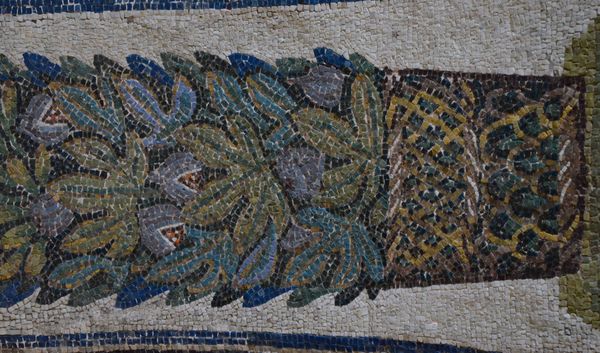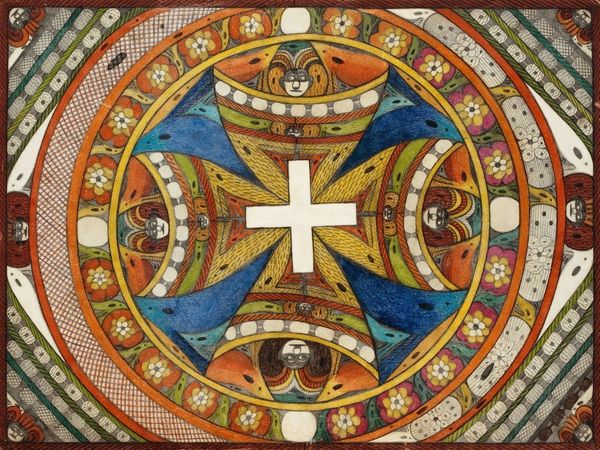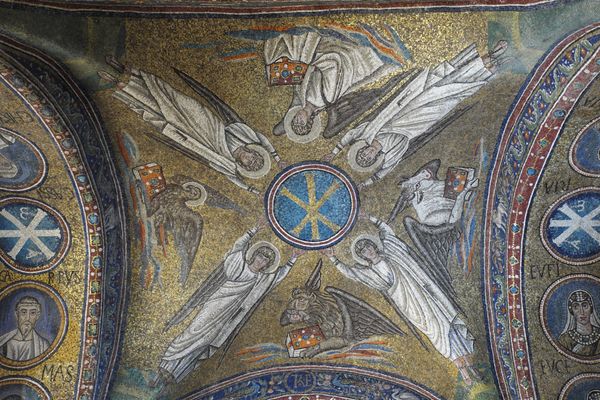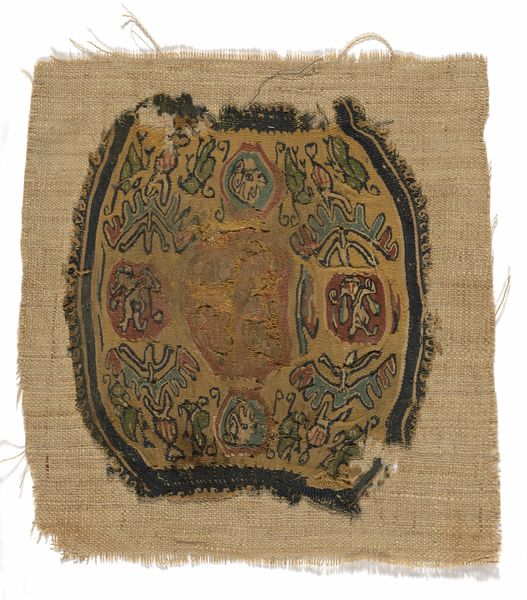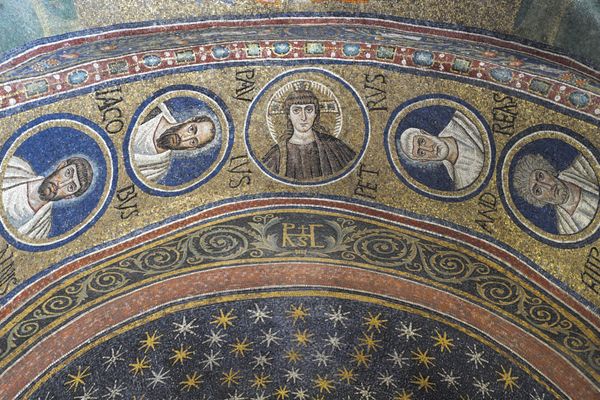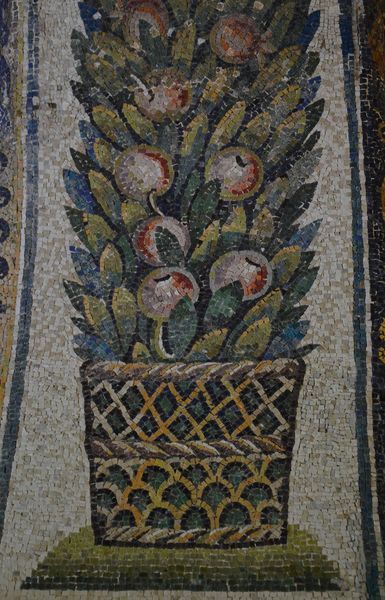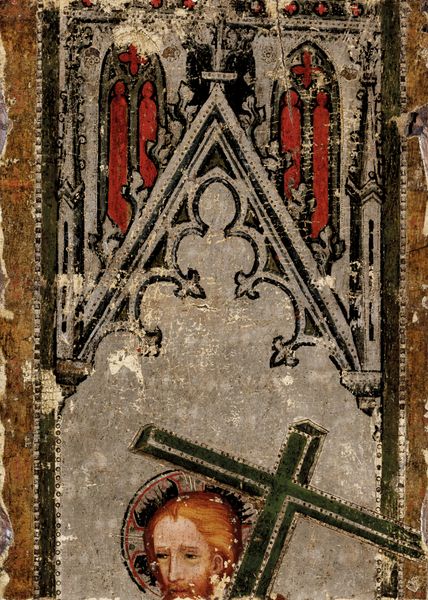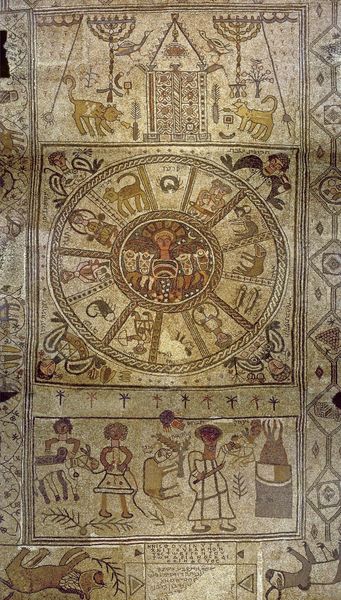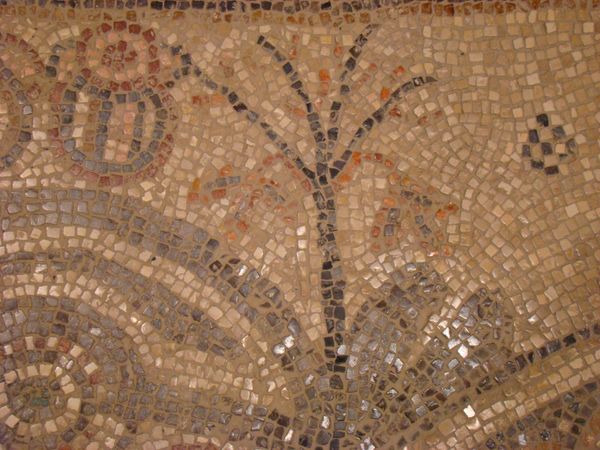
Ravenna, Mausoleo Di Galla Placidia 425
0:00
0:00
byzantinemosaics
Mausoleum of Galla Placidia, Ravenna, Italy
mosaic
#
mosaic
#
byzantine-art
#
pattern
#
pattern
#
geometric pattern
#
geometric
#
decorative-art
Copyright: Public domain
The Byzantine mosaics here at the Mausoleum of Galla Placidia in Ravenna were created by artisans between 330 and 1453, representing a fusion of Roman and Eastern Christian artistic traditions. During this period, Galla Placidia, a woman of immense power as a Roman Empress, played a pivotal role. Her influence shaped the religious and political landscape, and this mausoleum stands as a testament to her legacy. But how do these mosaics speak to us now? The interplay of light on the golden tesserae creates a shimmering effect, evoking a sense of ethereal beauty, while the Chi Rho symbol, representing Christ, is prominently displayed, underscoring the religious context of the time. These mosaics reflect the wealth and power of the Byzantine Empire, as well as the deep spiritual convictions of its people. They offer a window into a world where faith, politics, and art were inextricably linked. It's impossible not to be moved by the enduring beauty and the echoes of history that resonate within these walls.
Comments
No comments
Be the first to comment and join the conversation on the ultimate creative platform.


